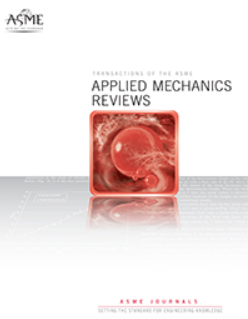The Compressive Strength and Microstructure of Alkali-Activated Mortars Utilizing By-Product-Based Binary-Blended Precursors
IF 16.1
1区 工程技术
Q1 MECHANICS
引用次数: 0
Abstract
Researchers have investigated the feasibility of using ultrafine palm oil fuel ash (u-POFA) as a cement replacement material because of its potential to reduce the environmental impact of concrete production. u-POFA, a by-product of palm oil fuel combustion, is a suitable replacement for Portland cement in concrete mixes because of its sustainability and cost-effectiveness. This study investigated the microstructural and compressive strengths of alkali-activated mortars (AAMs) based on fly ash (FA) and granulated blast-furnace slag (GBFS) being added with varying percentages of u-POFA. The mixture samples were prepared in eighteen mortars using sodium metasilicate (Na2SiO3) as the source material and sodium hydroxide (NaOH) as the alkaline activator. This study used field-emission scanning electron microscopy coupled with energy-dispersive X-ray spectrometry, X-ray diffraction, X-ray fluorescence, and Fourier-transform infrared spectroscopy to characterize the binary-blended mortars after 28 days of curing and determined the strength of the FA+GBFS (87.80 MPa), u-POFA+GBFS (88.87 MPa), and u-POFA+FA mortars (54.82 MPa). The mortars’ compressive strength was influenced by the CaO/SiO2 and SiO2/Al2O3 ratios in the mixture, which was directly due to the formation rate of geopolymer products of the calcium–alumina–silicate–hydrate (C–(A)–S–H), aluminosilicate (N–A–S–H), and calcium–silicate–hydrate (C–S–H) phases. Based on the contents of FA and GBFS, u-POFA significantly enhanced concrete strength; therefore, u-POFA used in a suitable proportion could enhance binary-blended AAMs’ microstructure.副产物二元混合前驱体碱活化砂浆的抗压强度和微观结构
研究人员已经研究了使用超细棕榈油燃料灰(u-POFA)作为水泥替代材料的可行性,因为它有可能减少混凝土生产对环境的影响。u-POFA是棕榈油燃料燃烧的副产品,由于其可持续性和成本效益,是混凝土混合物中波特兰水泥的合适替代品。研究了粉煤灰(FA)和粒状高炉渣(GBFS)添加不同比例的u-POFA后碱活性砂浆(AAMs)的微观结构和抗压强度。以偏硅酸钠(Na2SiO3)为原料,氢氧化钠(NaOH)为碱性活化剂,在18种砂浆中制备了混合样品。本研究采用场发射扫描电镜结合能量色散x射线光谱、x射线衍射、x射线荧光和傅里叶变换红外光谱对固化28天后的二元混合砂浆进行了表征,测定了FA+GBFS (87.80 MPa)、u-POFA+GBFS (88.87 MPa)和u-POFA+FA砂浆(54.82 MPa)的强度。砂浆的抗压强度受CaO/SiO2和SiO2/Al2O3配比的影响,这直接与钙-铝-硅酸盐-水合(C - (A) - s - h)、铝硅酸盐(N-A-S-H)和钙-硅酸盐-水合(C - s - h)相的地聚合物产物的形成速率有关。从FA和GBFS含量来看,u-POFA显著提高了混凝土强度;因此,适当比例的u-POFA可以增强二元共混aam的微观结构。
本文章由计算机程序翻译,如有差异,请以英文原文为准。
求助全文
约1分钟内获得全文
求助全文
来源期刊
CiteScore
28.20
自引率
0.70%
发文量
13
审稿时长
>12 weeks
期刊介绍:
Applied Mechanics Reviews (AMR) is an international review journal that serves as a premier venue for dissemination of material across all subdisciplines of applied mechanics and engineering science, including fluid and solid mechanics, heat transfer, dynamics and vibration, and applications.AMR provides an archival repository for state-of-the-art and retrospective survey articles and reviews of research areas and curricular developments. The journal invites commentary on research and education policy in different countries. The journal also invites original tutorial and educational material in applied mechanics targeting non-specialist audiences, including undergraduate and K-12 students.

 求助内容:
求助内容: 应助结果提醒方式:
应助结果提醒方式:


